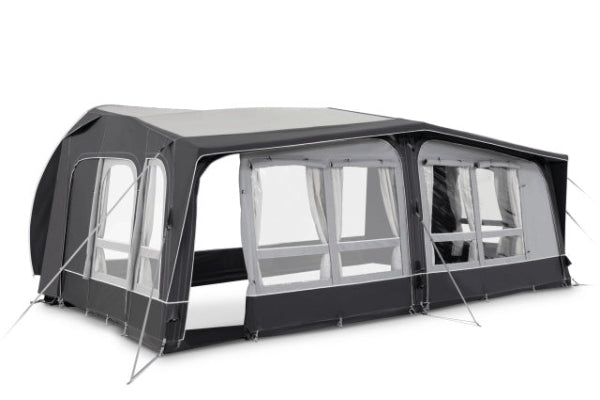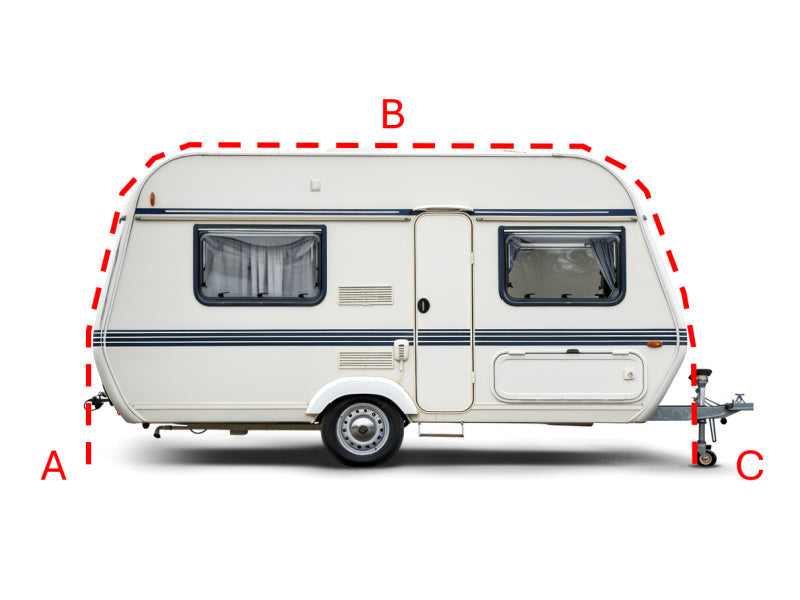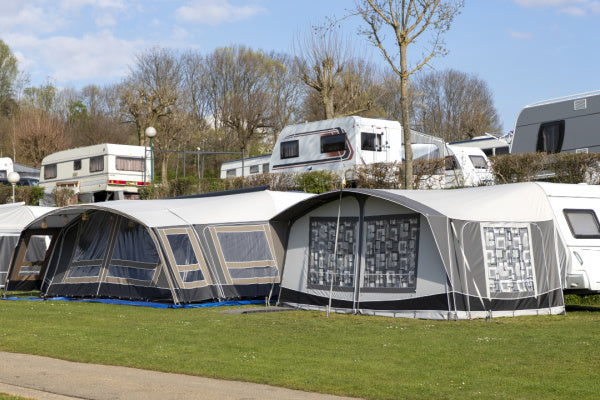How to Tension Your Caravan Awning with These Tips
Tired of your caravan awning flapping about like a distressed seagull? The secret is proper tensioning: adjust the support arms, use spring tensioners, and maintain even pressure throughout. Whether you're a seasoned caravanner or first-time camper, mastering this essential skill will keep your outdoor sanctuary stable and secure for years to come.
Understanding Awning Tension
Getting the tension right on a caravan awning isn't rocket science, but it does require attention to detail. Think of an awning like a sail - when properly tensioned, it stays rigid and strong. When it's loose, it catches every breeze and starts to act more like a flag in the wind.

Why Proper Tension is Crucial
Preventing Damage from Wind
Every experienced caravanner knows the heart-stopping sound of an awning flapping in strong winds. Wind damage isn't just about the immediate risk of tears and rips. Constant movement weakens the fabric over time, particularly at stress points around poles and fixings.
A properly tensioned awning disperses wind force across its entire surface. This even distribution prevents any single point from taking too much strain. During gusts, a well-tensioned awning will hold its shape rather than balloon outward.
Ensuring Stability and Safety
Safety isn't just about preventing collapse - it's about creating a reliable shelter in all weather conditions. Proper tension transforms a simple canopy into a robust outdoor room. The structure should feel solid and dependable, without excessive movement or instability.
Regular tension checks become even more crucial during extended stays. Weather changes and natural settling can affect tension levels over time. A quick daily check can prevent problems before they start.

Signs of Insufficient Tension
Sagging Roof
Water pooling after rain is nature's way of saying the tension needs adjustment. These pools add significant weight to the structure. Left unchecked, they can cause permanent stretching and potentially dangerous sagging.
The roof should present a smooth, taught surface without ripples or dips. Any visible sagging needs immediate attention, especially before rain is forecast.
Loose Sides
Sides should remain firm without excessive movement in light breezes. Listen for flapping sounds - they're a clear indicator that adjustments are needed. Watch for gaps forming between the awning and caravan wall, as these can let in wind and rain.
Techniques for Tensioning Your Awning
Adjusting Guy Lines
Pegging Points and Angles
The 45-degree rule serves as a reliable starting point for guy line positioning. This angle provides optimal tension between vertical and horizontal forces. Pegs should sink deep into firm ground, with only their hooks visible above the surface.
Ground conditions matter significantly. Soft or sandy soil might require longer pegs or ground anchors for security. Rocky ground might need alternative pegging strategies or weights.
Using Ratchet Straps
Ratchet straps offer precise control over tension levels. Start with minimal tension and increase gradually on all sides. The key is achieving balance - too much tension on one side creates problems elsewhere.
Modern ratchet straps often include markers or indicators for optimal tension levels. These guides help prevent over-tightening while ensuring sufficient stability.

Adjusting Awning Poles
Finding the Optimal Angle
Different weather conditions demand different pole angles. Steeper angles help with rain runoff but catch more wind. Flatter angles provide better sun protection but need extra attention to prevent water pooling.
Seasonal adjustments often become necessary. Summer setups might prioritise shade and ventilation, while spring and autumn installations focus more on weather protection.
Using Pole Extensions
Extensions aren't just for uneven ground - they can help fine-tune tension across the entire structure. Keep extension lengths minimal to maintain stability. Always check that extensions are properly locked and secured.
Troubleshooting Tension Issues
Dealing with Uneven Ground
Using Levelling Blocks or Ramps
Start levelling work before setting up the awning. Small adjustments at the caravan level can prevent major headaches with awning tension. Quality levelling blocks provide a stable foundation for the entire setup.
Addressing Obstacles
Using Extra Guy Lines
Additional guy lines need careful placement to enhance rather than hinder stability. Consider wind direction when adding extra support points. Sometimes fewer, well-placed guy lines work better than many poorly positioned ones.
Adjusting Pole Positions
Creative pole positioning can overcome most site obstacles. The goal remains maintaining even tension across the awning surface. Remember that any deviation from standard positions might require compensation elsewhere in the setup.
Success with awning tension comes from understanding these fundamentals and applying them to each unique situation. Regular maintenance checks help catch minor issues before they become major problems. With proper care and attention to tension, a caravan awning can provide years of reliable service in all weather conditions.
The effort invested in proper tensioning pays dividends in durability and peace of mind. Weather patterns may change, but a well-tensioned awning remains a steadfast companion for outdoor living. Remember that each adjustment builds experience, making future setups quicker and more efficient.
Other content you might like:
- Caravan awning size guide and calculator
- How to open a caravan awning
- Caravan awning setup guide
- Caravan awning layout ideas
- Caravan awning instructions manual
- Caravan awning essentials
- How to peg a caravan awning
- How to pack away a caravan awning
- How to get an awning tight to a caravan
- How long does it take to put a caravan awning up?






Leave a comment